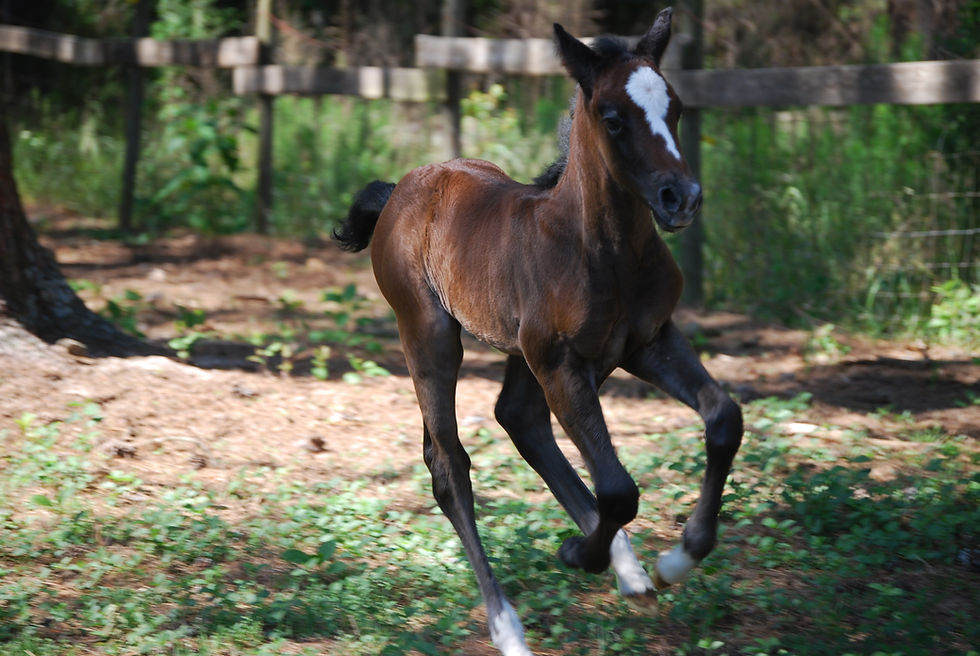Field Colic Work-Up
- Dr. Katy Mayhew
- Nov 8, 2017
- 4 min read
Colic is the number one call for emergency work we see as veterinarians. The one common denominator is there is always a worried owner attached to the case. With this in mind, I’d love to walk you through a typical, uncomplicated colic explaining how I like to treat them in the field and what you can do and expect if your horse is ever in this situation.
Horses tolerate pain differently based on their breed and personality. Just because one horse is exquisitely painful and throwing himself on the ground, it doesn’t mean his pasture mate is any less painful or has a less severe lesion if he’s standing quietly and refuses to eat.


Horses show pain differently. They may roll on their backs, or lay quietly. Often they will be dirty or dull and may kick at their belly or look back at their flanks.
The hardest part of a colic for most owners is the period of time between talking to me on the phone and my arrival at the farm. Their horse is uncomfortable and they have exhausted their arsenal of trying to help. It is a hard thing to watch.
Waiting for the vet….
Take away feed and grass and move horse to a safe and open area in case they try to roll
Horses may lay quietly, we want to prevent injury and violent thrashing, but resting quietly is fine!
Walking: it can help take the horse’s mind of his pain and encourage gastrointestinal motility. Limit hand walking to 10-15 minutes at a time. Don’t exhaust the horse.
Stay Safe! If a horse is becoming violently painful, get out of the way. Do not endanger yourself in order to prevent him from laying down or rolling.
Colic Exam
Once I arrive at the farm, I perform a physical exam before I do anything else. This helps me gather very important information and make decisions about treatment. During this process, I relay my findings to the owner and ask questions about what the horse generally eats, if he’s traveled recently etc., trying to put all the puzzle pieces together to figure out the big picture for this particular colic episode. I move down one side of the horse and then up the other completing a full physical exam.
Rectal Exam
For a rectal exam I have the person holding the horse stand on the same side as me and face me as I use my arm in a rectal sleeve to assess as much of the abdomen as I can via the rectum. Lubrication, proper restraint and sedation are important parts of a safe rectal exam. The person holding the horse is responsible for maintaining everyone’s safety so please don’t be offended if I ask you to put away your phone! I evaluate the abdomen in a counter clockwise fashion to ensure I assess every structure and determine whether it is normal or not.
Nasogastric Intubation
Nasogastric intubation, or tubing a horse, can be a lifesaving procedure. Horses cannot vomit and when something obstructs their intestines the fluid has nowhere to go except back into the stomach creating pressure and discomfort. The color and smell of the stomach fluid obtained through the tube is also very helpful. I often administer water, electrolytes and mineral oil via the nasogastric tube. These fluids help hydrate the horse systemically and stimulate the intestines to start moving again. Mineral oil serves as an excellent marker and will coat the manure and anus with an oily sheen in about 24 hours as it helps minor impactions and sand pass through the GI system.

Giving it Time
At this point my exam slows down. I take my time to clean up and write my notes, but most importantly I give the horse time to prove he is going to stay comfortable with fluids on his stomach before I leave. I like to see horses stand quietly after I know the sedation has worn off and to even start looking around in the stall for something to eat. Monitoring and Refeeding
If the horse stays comfortable, this is where the owner’s part of managing a colic becomes the most important. I feel the first three hours after treatment are the most critical and I like to have horses checked on frequently and to go for a couple of hand walks. If they remain comfortable during that time it is important to check on them several times through the day and overnight. I like for horses to pass 3-5 piles of manure before I start to refeed them and in uncomplicated cases this typically happens before the next morning. Refeeding begins slowly, gradually increasing to full feed over 48 hours.
Repeat Offenders
Sometimes, horses colic once and never again. Sometimes they are repeat offenders and colic every time the weather changes. Talking with your veterinarian about your feeding practices, upcoming travel plans and previous colic episodes can be very helpful in tailoring your horse’s management to prevent colic from happening.
For more information on colic and other equine emergencies check out the new Articles page on the practice website. www.coveredbridgeequine.com







Comments